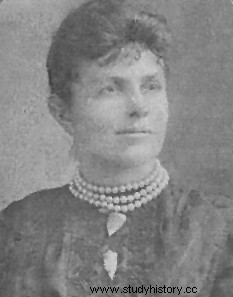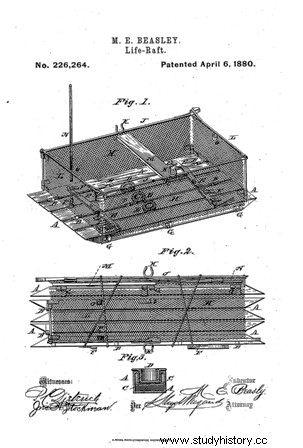American inventor, Maria E. Beasley (born Kenny) has filed numerous patents for his designs. It is notably the origin of a lifeboat used on the Titanic, which saved many lives.
Inventor

Maria E. Kenny was born in Philadelphia in 1847. She was the daughter of a miller. A curious child, Maria is particularly interested in mathematics, drawing, and how things work. She spends time at her father's mill, looking for ways to improve the process.
Subsequently, Maria moved to Chicago. She married in 1865 and held various jobs, including that of seamstress, before being listed as an inventor in the Chicago directory. She obtained her first patent in 1878, for a machine for strapping barrels and significantly accelerating their construction. Maria presented her invention, capable of building 1,500 barrels a day, at the World's Fair of Industry and Cotton in 1884. According to the "Evening Star", the machine earned her "a small fortune".
Maria's lifeboat
 In 1880, Maria Beasley decided to create an innovative lifeboat, which was an evolution from the very basics of the time and which is "fireproof, compact, safe and easily deployed". Its new design includes rectangular metal guardrails and floats. Foldable and unfoldable, Maria's lifeboat is compact and easily storable. Patented in 1882, Maria's invention was also presented at the Universal Exhibition of Industry and Cotton in 1884.
In 1880, Maria Beasley decided to create an innovative lifeboat, which was an evolution from the very basics of the time and which is "fireproof, compact, safe and easily deployed". Its new design includes rectangular metal guardrails and floats. Foldable and unfoldable, Maria's lifeboat is compact and easily storable. Patented in 1882, Maria's invention was also presented at the Universal Exhibition of Industry and Cotton in 1884.
Its lifeboats will be used in 1912 on the Titanic. Although installed in insufficient numbers compared to the number of passengers, during the shipwreck of the liner they enabled a large number of lives to be saved.
Various patents
In total, Maria Beasley filed fourteen patents in two countries. These inventions are varied, including, alongside his barrel building machine and two model lifeboats, foot warmers, pans and anti-derailment devices for trains.
